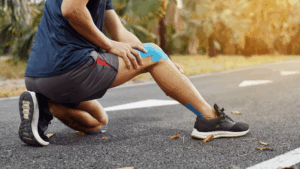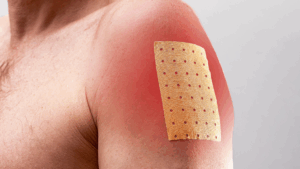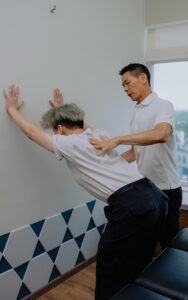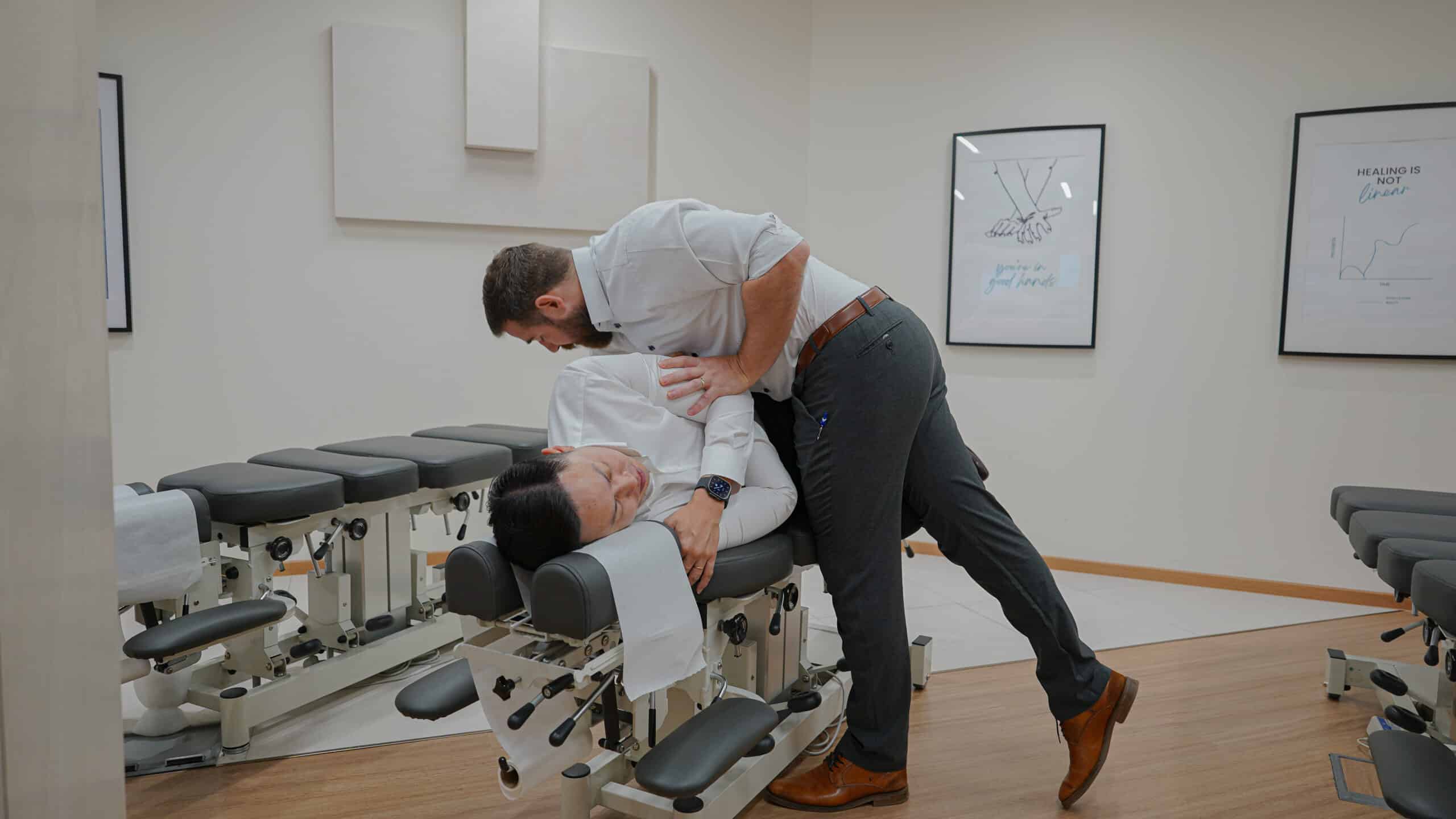At Chiropractic Singapore, we often meet individuals who subscribe to the mantra “no pain, no gain.” While this may seem motivational in athletic or high-performance settings, it can mislead people into ignoring vital warning signals from their bodies. Pain is not merely a hurdle to overcome—it is an essential biological alert system that signals imbalance, dysfunction, or potential injury.
⚠️Remember, pain might be common, but pain is NOT normal!
In this article, we explore the science behind pain, the physiological ramifications of overtraining, and how to distinguish between constructive and harmful discomfort. Our goal is to equip you—whether you’re an athlete, healthcare professional, or informed reader—with insights that promote sustainable performance and long-term health.
Signs of Overtraining: Understanding the Full Spectrum
Overtraining is a multifaceted condition involving excessive workload, inadequate recovery, and heightened stress on the neuromuscular and endocrine systems. Although dedication to training is admirable, failure to recognise overtraining can lead to systemic breakdowns rather than gains.

Clinical and Functional Indicators of Overtraining:
Overtraining isn’t just physical—it impacts multiple systems across the body. Watch for these key signs that may indicate the body is under excessive physiological stress and not recovering adequately:

- Persistent fatigue that lingers even after adequate rest days or deloading phases, indicating the body is not fully recovering from physical stress.
- Performance decline where progress halts despite consistent training, proper technique, and structured programming—often a red flag for overtraining.
- Disrupted sleep patterns, including trouble falling asleep, frequent night waking, or excessive daytime sleepiness (hypersomnia), all of which compromise recovery and hormonal balance.
- Elevated resting heart rate and decreased heart rate variability (HRV) — —biomarkers of autonomic nervous system stress—signal that the body is stuck in a “fight-or-flight” state rather than recovery mode.
- Frequent colds, infections, or delayed recovery, reflecting suppressed immune function
- Chronic muscle soreness that lasts well beyond typical delayed onset muscle soreness (DOMS), suggesting inadequate tissue repair or possible underlying strain.
From a clinical standpoint, overtraining represents a breakdown in the body’s ability to regulate homeostasis. It alters immune responses, disrupts hormonal balance (notably the hypothalamic-pituitary-adrenal axis), and often manifests in neuro-musculoskeletal dysfunctions requiring clinical evaluation.
Workload and Adaptation: Training Smart, Not Just Hard

Workload comprises the cumulative physical and physiological stress placed on the body through exercise. Adaptation occurs when workload is introduced progressively with adequate recovery. When training intensity or volume outpaces the body’s capacity to adapt, dysfunction and injury ensue.
Evidence-Based Load Management Techniques:
- Follow the 10% rule: avoid increasing training volume or intensity by more than 10% weekly
- Use periodisation: alternate between phases of intensity, volume, and recovery
- Employ active recovery and cross-training to prevent overuse injuries
- Monitor subjective (e.g. session RPE) and objective (e.g. HRV) fatigue markers
- Assess movement biomechanics to identify compensation patterns and inefficiencies
Post-Exercise Muscle Pain: Adaptive Response or Early Warning?
Mild muscle pain after exercise, or Delayed Onset Muscle Soreness (DOMS), reflects the body’s natural adaptation to physical stress. However, pain that is severe, prolonged, or atypically located may indicate pathological strain or injury.
DOMS vs. Pathological Muscle Pain:
Parameter |
DOMS |
Pathological Muscle Pain |
|---|---|---|
Onset |
12–72 hours post-exercise | Immediate or prolonged post-exercise |
Pain Quality |
Dull, diffuse, bilateral | Sharp, localised, possibly unilateral |
Resolution |
3–5 days | >7 days, persistent |
Additional Symptoms |
Mild stiffness, minor swelling | Bruising, heat, significant inflammation |
Persistent or atypical muscle pain should not be dismissed. Chiropractors at our clinic conduct thorough assessments to rule out tendonopathies, fascial adhesions, or muscle strains that require targeted intervention.
Muscle Strain vs. Nerve Pain: Differentiation Is Key
Understanding the origin of pain is essential for effective intervention. Muscle strain results from mechanical injury to muscle fibres or tendons, whereas nerve pain arises from compression or inflammation of neural structures.
Comparison Table: Muscle Strain vs. Nerve Pain
Feature |
Muscle Strain |
Nerve Pain |
|---|---|---|
Aetiology |
Overuse, overstretch, direct trauma | Compression, inflammation, nerve root impingement |
Location |
Localised to affected muscle/tendon | Radiates along a nerve pathway |
Pain Quality |
Dull, sore, or pulling sensation | Sharp, burning, tingling, or electric |
Functional Effects |
Limited ROM, local weakness | Numbness, loss of coordination, reflex changes |
Misdiagnosis can lead to inappropriate self-treatment. Our practitioners use neuromuscular evaluations and manual diagnostic techniques to determine the root cause and recommend the appropriate care pathway. If chiropractic care isn’t the most suitable option, we’ll refer you to trusted medical or allied health specialists to ensure you get the care you need.
Inflammation and Fever: When Healing Derails
Acute inflammation following exertion is part of a normal recovery cascade. However, sustained inflammation or fever post-exercise can signal maladaptive responses or pathology.

Concerning Signs and Potential Causes of Inflammation:
- Systemic inflammation from excessive muscle damage
- Electrolyte imbalance impairing thermoregulation
- Misattributed infections
- Rhabdomyolysis—a serious condition involving muscle breakdown that releases harmful proteins into the bloodstream
Such conditions require immediate attention. Our chiropractic interventions support healthy circulation and mechanical balance, helping reduce chronic inflammation and prevent complications.
The Limits of Pain Relief Patches for Muscle Pain
Topical pain relief patches often contain NSAIDs, menthol, or capsaicin that block pain signals temporarily. While useful for symptom relief, they do not address biomechanical dysfunctions or neuromuscular imbalances.

Short-Term Fix vs. Long-Term Resolution of Muscle Pains:
Intervention |
Primary Purpose |
Likely Outcome |
|---|---|---|
Pain Relief Patches |
Temporarily block pain signals using ingredients like menthol, NSAIDs, or capsaicin | Provides short-term relief, but does not address the root cause of the pain. Symptoms may return once the effect wears off. |
Chiropractic Care |
Identify and correct underlying biomechanical dysfunctions such as joint misalignments, nerve irritation, or muscular imbalances | Promotes long-term healing, improved function, and reduced recurrence through targeted adjustments and neuromuscular rehabilitation. |
When pain persists, it’s essential to move beyond temporary solutions. Chiropractic care includes spinal adjustments, posture correction, and neuromuscular re-education that address root causes.
Injury Prevention: A Strategic, Holistic Framework
True injury prevention goes beyond avoiding pain—it’s about optimising the body’s capacity to move, adapt, and recover. It requires foresight, precision, and a personalised blend of movement, recovery, and clinical insight.

Core Elements of Pain Prevention Strategies:
- Activity-specific warm-upsPrime the body for performance with dynamic, targeted preparation
- Movement efficiency & motor controlRefine technique to minimise strain and improve biomechanics
- Spinal alignment & postural screeningUncover structural imbalances that often go unnoticed but drive compensation and stress
- Optimised nutrition & hydrationSupport tissue repair, reduce inflammation, and sustain performance
- Ongoing mobility & functional assessmentsDetect early signs of restriction, asymmetry, or overuse before symptoms arise
- Proactive attention to discomfortRecognise pain as a signal—not a nuisance—and respond early
Moving Beyond “No Pain, No Gain” with Chiropractic Singapore
At Chiropractic Singapore, we view pain not as an isolated issue, but as a message—an expression of underlying imbalances within the body’s structural and neurological systems. Our approach is holistic, evidence-informed, and focused on long-term, functional change.

How Chiropractic Care Supports Your Journey Towards “No Pain, More Gain”:
- Spinal pain & tension – Adjustments relieve pressure in the spine, easing stiffness and improving mobility for daily comfort and movement.
- Nerve-related symptoms – Chiropractic care helps reduce nerve compression, easing numbness, tingling, or radiating pain and restoring normal function.
- Postural stress & tech-neck – Realigns the spine to correct poor posture from prolonged sitting or screen use, easing upper back and neck strain.
- Limited mobility & tightness –Restores joint movement and flexibility, helping reduce muscle tightness and improve range of motion.
- Tension headaches – Eases cervical tension, balances the nervous system
Ready to Address Pain the Right Way?
Whether you’re dealing with lingering muscle pain, potential nerve irritation, or signs of overtraining, Chiropractic Singapore provides an integrative path to recovery that aligns with your goals.
Why Patients Choose Us:
- Evidence-led assessments and tailored care
- A collaborative approach to healing
- Comprehensive diagnostics with functional insight
- Commitment to sustainable wellness—not just symptom suppression
Don’t let pain define your journey. Book your consultation today and reclaim strength, mobility, and confidence—with expert guidance every step of the way.











